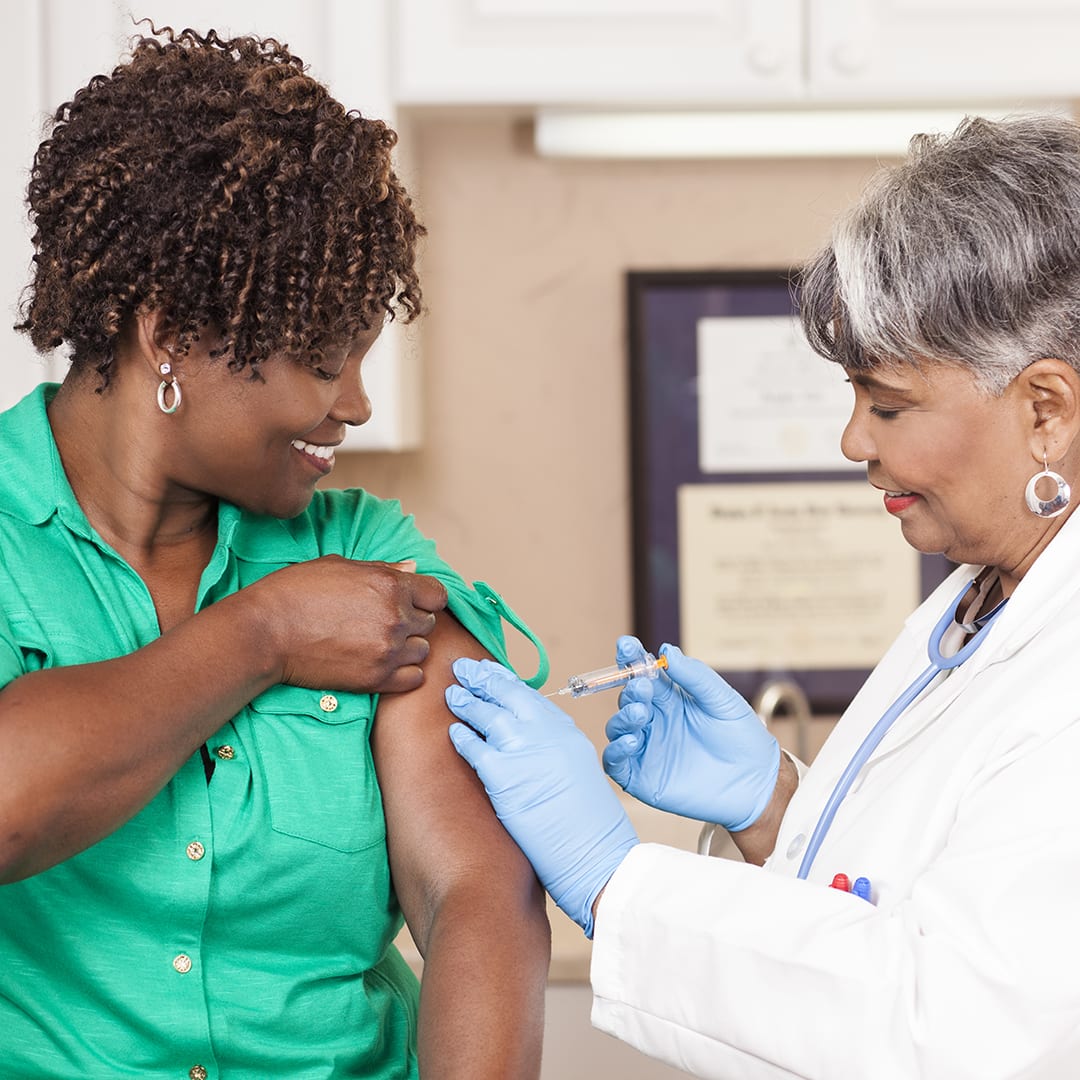Developing the 2020 National Vaccine Plan
A comprehensive 2020 Vaccines National Strategic Plan (VNSP) is more important now than ever before. As our nation prepares for upcoming COVID-19 vaccines, we know that issues of equitable distribution and access for all–particularly for the populations most at risk– are critical in determining the pace and success of the nation’s recovery. Allocation, distribution, access, and utilization of the COVID-19 vaccine will likely be the greatest public health effort of our generation. And while this effort will present significant challenges, it also brings a new opportunity to expand the strength of existing immunization program infrastructure in the United States.
Setting aside the current pandemic, vaccine confidence and hesitancy issues remain a challenge across all sectors of the health care system and our government. Despite the well-known benefits of immunizations, more than 50,000 adults die from vaccine-preventable diseases each year. Adult coverage lags behind current Healthy People targets for most commonly recommended vaccines: influenza, pneumococcal, tetanus, hepatitis B, herpes zoster, and HPV. Additionally, adults seeking access to and coverage for vaccines encounter a confusing health care system that presents multiple barriers, including lack of information about recommended vaccines, financial hurdles, and technological and logistical obstacles.
To combat this problem, the National Vaccine Plan has five key strategies to strengthen immunization rates in our country.
- Foster innovation in vaccine development and related technologies.
- Maintain the highest possible levels of vaccine safety.
- Increase knowledge of and confidence in routinely recommended vaccines.
- Increase access to and use of all routinely recommended vaccines.
- Protect the health of the American public by supporting global immunization efforts.
Goals 3 and 4 of the National Vaccine Plan align most with our central mission at AVAC to improve access to and utilization of vaccines by reducing technological, logistical, geographic, socio-economic, and financial barriers to vaccination. AVAC encourages prioritization of these goals.
Goal 3: Increase knowledge of and confidence in routinely recommended vaccines.
We need to make the case to the public that vaccines save lives. Increasing knowledge of and confidence in recommended vaccines is critical to increasing immunization rates. To do that, the federal government, immunization partners, and community organizations must work together to counter mis- and disinformation regarding vaccines. This will be especially important for the COVID-19 vaccine. In order to build trust and confidence in the COVID-19 vaccine’s safety and effectiveness, we must ensure that information about the vaccine development process, the principles and process for distribution, and the prioritization of certain populations reaches the public in a clear, understandable, and transparent way.
A vital part of increasing vaccine uptake is reducing disparities and inequities in vaccine confidence and acceptance, particularly among populations of color. We must first develop a better understanding of the unique needs and concerns of each population group. Only then can we work collaboratively to effectively tailor messages and strategies to address each community’s specific issues. Trusted community leaders and healthcare providers will play essential roles in delivering information to those groups. Notably, as we work to spread our message, we must continue to evaluate and adapt our work based on evidence-based metrics that measure whether activities are culturally appropriate and reflect the health literacy, language proficiency, and functional and access needs of specific target populations.
While significant progress has been made towards providing accurate, timely, and transparent vaccine information through varied communications and partnership efforts, additional tools are needed to disseminate vaccine information. Strategies include publication of evidence-based recommendations, use of mass media and new media, provider education and training, and support of non-federal stakeholder partners. These tools are essential to educating the public and increasing support for adult immunizations.
Goal 4. Increase access to and use of all routinely recommended vaccines.
National immunization campaigns to protect the population against vaccine-preventable diseases have the ability to make a difference, but Goal 3 will be most impactful if and only if barriers to access have been effectively addressed, as laid out in Goal 4.
The six objectives specified within this goal each include aspects that we strongly support.
- Increase the availability of vaccines in a variety of settings.
- Reduce disparities and inequities in access to and use of routinely recommended vaccines across the lifespan.
- Strengthen data infrastructure, including Immunization Information Systems.
- Reduce financial and systems barriers for providers to facilitate delivery of routinely recommended vaccines.
- Reduce financial and systems barriers for the public to facilitate access to routinely recommended vaccines.
- Promote public-private partnerships to increase the capacity of the health system to deliver vaccines for routine use and protection during outbreaks as a means to achieve all of the elements of the VNSP.
At AVAC, we believe that a comprehensive National Vaccine Plan is critical to the health of our nation, both in response to the current pandemic and overall. We are hopeful that this updated plan will guide us as we work towards a healthier future. Read AVAC’s full comments on the National Vaccine Plan draft here.
